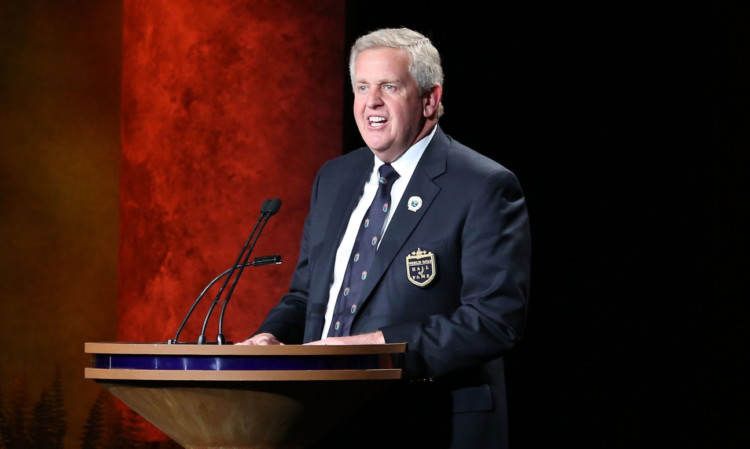In European sport, it’s an insult to be termed a museum piece.
But in the land of squeaky newness and that glorious oxymoron “instant tradition” (a PR man’s description of the TPC Sawgrass clubhouse when it was built less than 10 years ago) they all fervently debate who is “honoured” in the museums that are the Halls of Fame.
There’s one in the USA for almost everything. There is an Insurance Hall of Fame in Alabama which somehow draws 250,000 visitors a year. There’s a Hall of Fame for marbles in New Jersey, croquet in Florida, and ten-pin bowling in Texas. Country singer Taylor Swift is an inductee in that last one, quite obviously.
The big Daddy is the Baseball Hall of Fame in Cooperstown, New York, which is actually a great place to visit even if you’re not a devotee.
However entry into their imposing red brick building is now the subject of an annual national argument, descending into fury as no-one is admitted because of fears that they all took performance-enhancing drugs.
Golf’s Hall of Fame in St Augustine, Florida does not have nearly the gravitas of Cooperstown, nor even that of the Rock’n’Roll Hall of Fame (which is in Cleveland for inexplicable reasons).
Why is this so? For example until very recently, the WGHoF at St Augustine had two sections; the World Golf Hall of Fame itself and the International Hall of Fame. In this case, of course, “World” meant the USA, and “International” meant everywhere else.
Unlike just about every other Hall of Fame, the WGHoF inducts actively successful players, as long as they’re over 40. Therefore Phil Mickelson, Vijay Singh and Ernie Els are all in it.
Until this weekend, there was no strict criteria for the panel of journalists to make their decision on new inductees, resulting in Colin Montgomerie (no majors) and Fred Couples (one major) getting elected but Mark O’Meara (two majors) and Laura Davies (four majors, 84 wins worldwide) denied.
In addition, the need to honour “contributors” has resulted in the likes of former US presidents George Bush (the first one) and Dwight Eisenhower being inducted forerto be honest, I’ve no idea.
All this together makes the WGHoF somewhat lacking in credibility. But the PGA Tour, which now effectively owns the Hall, is attempting to put that to rights.
The World and International ballots have gone. A new panel consisting of administrators, a reduced number of media and unimpeachable figures like Arnold Palmer, Nancy Lopez and Annika Sorenstam will deliberate on who gets in. And you have to have 15 “notable” wins or two majors to be inducted.
But of course they can’t or won’t “un-induct” anyone already in, so those people that fatally lower the Hall’s credibility will continue to do so.
If you’re in Florida on holiday and willing to pay the $20 entry fee to look at bronze plaques, or enjoy the biennial indiction ceremonies on the Golf Channel, then fine. But pardon the rest of us stifling a yawn.
THE GREATEST UPSET
The death last week at 92 of Jack Fleck, who stunned golf by beating Ben Hogan at a play-off at the US Open in 1955, had us scrambling around for golf’s greatest upsets.
The 20-year-old Francis Ouimet defeating Harry Vardon and Ted Ray in the US Open play-off of 1913 at Brookline is probably still the most influential upset in the history of the game. The amateur Ouimet’s defeat of the two professional giants of the Edwardian era was a significant factor in creating the golf boom in America.
Fleck’s victory he was a rookie and it was his first pro win is probably more notable now as Hogan’s last chance to add to his major haul. Indeed the great man’s last major championship was arguably his greatest win, The Open of 1953 at Carnoustie, and he won just one more pro tournament after losing to Fleck.
The greatest upset of modern times? In a play-off, it’s surely Ernie Els losing the 2004 Open to Todd Hamilton at Troon. The £50 I had on Ernie to win that week makes it especially painful.
But the more one considers it, YE Yang’s duel with Tiger Woods in the PGA Championship at Hazeltine in 2009 is clearly the one.
It was properly man-on-man, the two playing in the final group on Sunday. Tiger had a two-shot lead after 54 holes, and we all believed that Tiger NEVER lost a major with a 54-hole lead, particularly against ex-weightlifters from a continent that had never produced a major champion before.
Well, there’s always a first time for everything. Yang shot 70 to Tiger’s 75, but the three-shot victory margin belies the intensity of the final holes, as Woods tried everything short of gamesmanship to intimidate Yang but failed.
Coincidentally, it remains Tiger’s best chance of winning a major since HIS greatest, the 2008 US Open “on one leg” at Torrey Pines.
Could that possibly be, like `53 was for Hogan, his last major?
